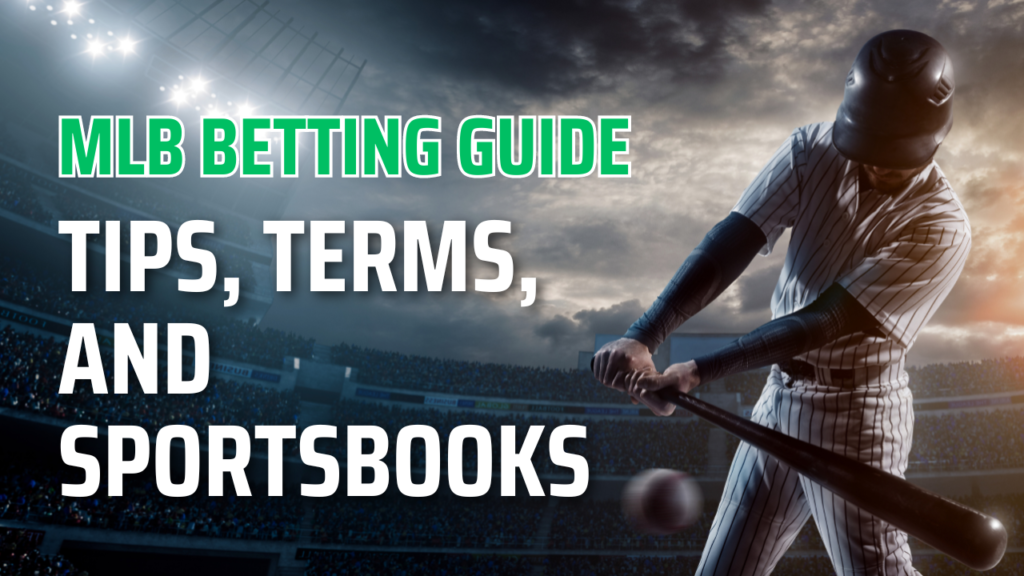
By Dexter Foley
Welcome to Baseball Betting
Baseball has been a part of American history since the late 1800s. America’s pastime has grown over time, with 30 teams across Major League Baseball and each team having up to 40 players under contract. With new rules and changes to tradition the sport continues to grow.
MLB owners (of even the worst small market teams) are making a fortune year after year, now it’s time to figure out how some of that baseball money can end up in your account.
Baseball can be a complicated sport to understand, especially with how slow everything moves over the course of a game. What are run lines? How do extra innings work? What’s a DH?
But what’s even more important than knowing how the game works is how to bet on it. Use the information below to get a handle of the game and how to effectively bet on baseball.
MLB Betting 101: The Betting Basics
There are three different answers you may want when trying to figure out how to bet on baseball:
- “I see Yankees -180 and Twins +160. What on earth does that mean?
- “I know how to bet and what all those numbers mean, but I don’t know where to bet.”
- “I know how to bet, but I want to expand my handicapping skills and become a more profitable baseball bettor.”
Here are the basics.
How Do Moneyline Odds Work?
A popular bet in baseball is the moneyline, which requires you to pick the winner of the game. But it’s not a 50-50 proposition in most cases – you won’t get paid the same for taking the Yankees to beat the Twins in New York as you would for taking the Twins to beat the Yankees in Mn, given the ability of each team.
So each team is assigned moneyline odds by the sportsbook based on their ability, and bettors have to pay a corresponding price. Here’s how they work:
- Phillies -300
- Marlins +250
American odds like these are centered around $100. So if you bet $300 on the Phillies at -300, you’d win $100 if Philadelphia wins. If you bet $100 on the Marlins at +250 and they win, you’d win $250.
You don’t have to bet $100, of course. If you bet $3 on Philadelphia, you’d win $1. Bet $1 on the Marlins, win $2.50.
Is There a Point Spreads in Baseball?
In football and basketball, the most popular betting option is the point spread – it’s a bet on the margin of victory in that game. Because baseball is lower-scoring, the spread (called the run line) is almost always -1.5 and +1.5 runs, with corresponding odds depending on team ability. So the favorite needs to win by 2 runs to win a -1.5 bet, and the underdog can lose by 1 or win the game to cash a +1.5 bet.
Let’s use that same example from above.
- Phillies -1.5 (-110)
- Marlins +1.5 (-110)
Because Philadelphia is so much better than Miami, sportsbooks are saying it’s about a 50-50 chance that they win by 2 runs or more.
For more evenly-matched teams, you can get big prices on the -1.5 side, and you’ll have to pay up to bet the +1.5 side.
- Astros -1.5 (+200)
- Red Sox +1.5 (-240)
Remember, at +200, you’re risking $1 and winning $2. That means it’s less likely to happen, because these two teams are closer in ability.
What About Over/Unders?
Another popular betting option in baseball is wagering on the total (aka the over/under).
You’re betting on the total runs scored by both teams going over or under the number set by sportsbooks.
Most MLB totals are set at 8 or 8.5, with some at 9 and some at 7 and 7.5 for lower-scoring teams.
The Twins-Rays total on May 1, 2022 was 8. Minnesota won 9-3. That means anyone who took the over cashed their bet because 12 runs were scored. If the total was 8, it would be a push and all bets get refunded.
But depending on the teams and situation, you may have to risk a different amount on the over or under.
Twins vs. Rays
- Total: 8
- Over odds: -125
- Under odds: +105
Like the moneyline example above, you have to pay more for betting the over than the under. Sportsbooks and bettors have determined the game going over 8 is more likely than it going under.
For every $1.25 risked, you’d win $1. For every $1 risked on the under, you’d win $1.05.
Rangers vs. Padres
- Total: 8
- Over odds: -105
- Under odds: -115
Sportsbooks believe it’s more likely the game goes under than over, so you have to pay a bit more to take the under.
Totals are not just limited to the full game. You can bet the first five inning over/under, alternate totals, and more.


